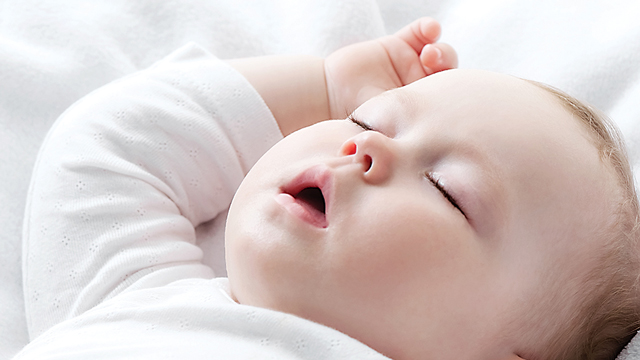We’ve all heard Mother Goose’s lullaby “Rock-a-bye Baby.” While even new parents agree that a treetop is not the place for an infant, can they rest knowing their baby is safe in his crib?
Nearly ten years ago, the American Academy of Pediatrics (AAP) initiated the Back to Sleep campaign advocating that infants be positioned on their backs for sleep. Since 1992, the incidence of SIDS (Sudden Infant Death Syndrome) has decreased by as much as 50 percent according to some reports. Despite the success of this campaign, a 2009 study in Pediatrics revealed that more than a third of pictures of sleeping infants in magazines geared toward women of childbearing age depicted infants in inappropriate sleep positions, and two-thirds of sleep environments shown did not meet the AAP’s recommendations. In other words, while the new quilt from grandma perfectly matches the bumper pads your older sister used ten years ago, none of it belongs in the crib with baby.
So what are the recommendations? The AAP says “Back to Sleep and Tummy to Play.” Infants should be placed on their backs to sleep, even for short naps, on a safety-approved crib with a firm mattress. Stuffed toys and soft, fluffy bedding should be removed from the sleep area. Parents need to keep their infant’s head and face uncovered. Infants should be dressed in light clothing to avoid overheating and the environment should be smoke-free.
Sounds simple enough? Not so fast. In an effort to ensure that infants stayed on their backs, infant positioners quickly hit the market. The most common designs featured bolsters attached to a thin mat with a wedge to elevate the infant’s head. In September 2010, the FDA and Consumer Product Safety Commission warned parents not to use these positioners. In a period of 13 years, 12 deaths were attributed to suffocation associated with the use of infant positioners. Dozens of other infants were reportedly found in compromising positions related to these products.
Of course, a complication of the “back to sleep” mission has been the significant increase in the incidence of positional plagiocephaly, or a flattening on the back of the head resulting from infants continually resting their head in the same place in the crib, carseat, or carrier. It is worse in infants with torticollis, or tight neck muscles, that cause them to continually hold their heads in the same position. Changing an infant’s orientation in the crib helps, as does increased tummy time – hence the “tummy to play” portion of the AAP’s slogan. Parents should also avoid having baby in an infant seat or carrier for an excessive amount of time. Hold your infant upright. For infants with torticollis, your pediatrician may recommend physical therapy. As for the plagiocephaly, your pediatric health care provider will monitor the shape of your infant’s head to make sure that it is growing and developing appropriately.
So much for a sleep deprived parent to think about. Let’s keep it simple with a clever mnemonic from Susan Cummings, MD, MPH, the FDA pediatric expert. She advocates following the ABCs of infant sleep, summing it up like this: Alone on the Back in a bare Crib. And try to remember, the final line of the classic lullaby I mentioned earlier: Now sound asleep until morning light!





